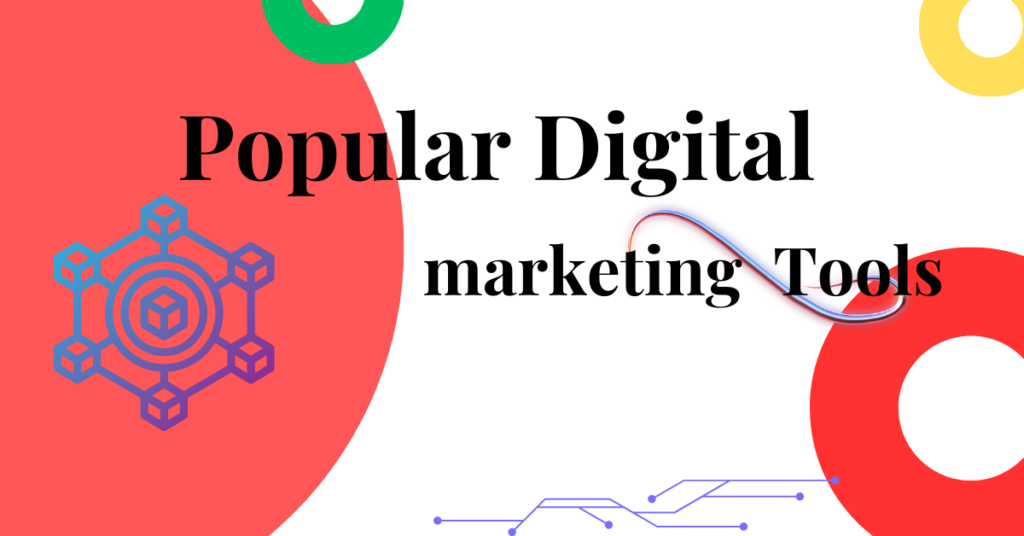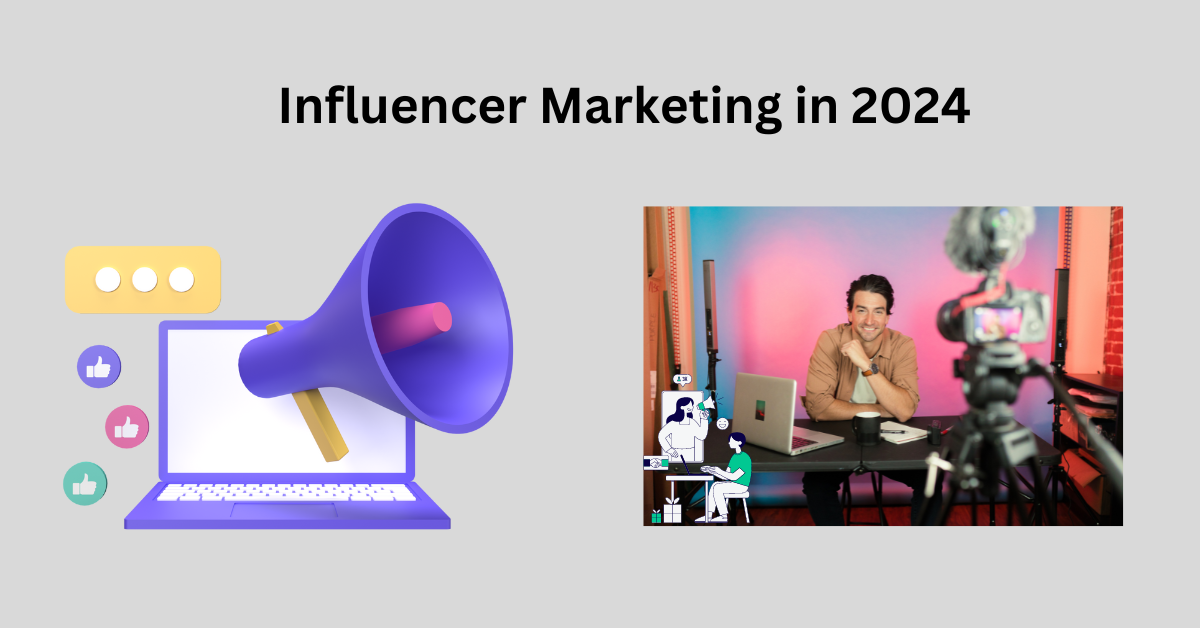Table of content
- The Most Popular Digital Marketing Tools
- Content Writing
- Conclusion
The most Popular Digital Marketing Tools

Digital marketing is a dynamic field, and the tools that professionals use can make a significant difference in the efficiency and effectiveness of their campaigns. Here are some popular digital marketing tools, categorised by their primary function
SEO Tools
Google Analytics: Provides detailed insights into website traffic and user behaviour, helping marketers understand what works and what doesn’t.
Ahrefs: Known for its comprehensive backlink analysis, keyword research, and competitor analysis features.
SEMrush: In addition,Offers tools for SEO, PPC, content, and social media marketing. It is especially useful for keyword research and competitive analysis.
Moz: In addition,Provides SEO tools including site audits, rank tracking, backlink analysis, and keyword research.
Content Marketing Tools
HubSpot: In addition,An all-in-one inbound marketing, sales, and customer service platform that helps with content management, SEO, and analytics.
BuzzSumo: Helps discover popular content and find influencers in a particular niche.
Grammarly: In addition,Assists in checking grammar, spelling, and style to ensure content is error-free and polished.
Canva: A graphic design tool that helps create visually appealing content for social media, blogs, and websites.
Social Media Marketing Tools
Hootsuite: Allows scheduling and managing social media posts across multiple platforms.
Buffer: Similar to Hootsuite, it helps with scheduling posts, tracking the performance of social media content, and managing accounts.
Sprout Social: In addition,Provides social media management, customer care, and analytics tools.
SocialBee: Offers content categorization, scheduling, and recycling for consistent social media posting.
Email Marketing Tools
Mailchimp: A popular email marketing platform that offers automation, templates, and analytics.
Constant Contact: Provides email marketing tools, including customizable templates and list segmentation.
SendinBlue: Combines email marketing with SMS marketing and provides robust automation features.
ConvertKit: Designed for creators, it helps with email list management, automation, and landing page creation.
Pay-Per-Click (PPC) Tools
Google Ads: The go-to platform for running PPC campaigns on Google’s search engine and its partner sites.
Facebook Ads Manager: Manages PPC campaigns on Facebook and Instagram.
AdEspresso: Simplifies Facebook and Instagram ad creation and provides detailed analytics.
Analytics Tools
Google Analytics: As mentioned, it’s crucial for tracking and analysing website traffic and user behaviour.
Hotjar: Provides heatmaps, session recordings, and surveys to understand user interactions on a website.
Kissmetrics: Offers advanced analytics focusing on user behaviour and conversion tracking.
Mixpanel: Specialises in user analytics for web and mobile applications, focusing on tracking actions and events.
Customer Relationship Management (CRM) Tools
Salesforce: A leading CRM platform that integrates with various marketing tools to manage customer relationships and data.
HubSpot CRM: Free CRM tool that integrates with HubSpot’s marketing software.
Zoho CRM: Offers a suite of tools for managing sales, marketing, and customer support.
Content Writing
Content writing is a crucial component of digital marketing, encompassing the creation of written material for various platforms, including websites, blogs, social media, emails, and more. High-quality content is essential for engaging audiences, driving traffic, and improving SEO. Here is a detailed exploration of content writing
Understanding the Purpose
Informational Content: In addition,Provides valuable information to educate or inform the reader. Examples include how-to guides, tutorials, and industry reports.
Promotional Content: Aims to promote a product, service, or brand. In addition,This includes sales pages, advertisements, and product descriptions.
Entertaining Content: Engages readers through entertainment, such as humorous articles, memes, or viral videos.
Engaging Content: In addition,Encourages interaction and engagement, like social media posts, polls, and quizzes.
Research and Planning
Audience Research: In addition,Understand the target audience’s needs, preferences, and pain points to tailor content that resonates with them.
Keyword Research:In addition, Identify relevant keywords and phrases that the target audience is searching for, using tools like Google Keyword Planner, Ahrefs, and SEMrush.
Content Calendar: Plan and organise content publication schedules to maintain consistency and timely delivery.
Creating High-Quality Content
Compelling Headlines:In addition, Craft attention-grabbing headlines that entice readers to click and read further. A/B testing different headlines can help determine which ones perform best.
Engaging Introductions: Start with a hook that captures the reader’s interest and provides a preview of what they can expect from the content.
Clear and Concise Writing: In addition,Use simple language and avoid jargon to ensure the content is easy to understand.
Visual Elements: Moreover,Incorporate images, videos, infographics, and other visual aids to make the content more engaging and easier to digest.
SEO Optimization: In addition, Optimise content for search engines by including relevant keywords, meta descriptions, alt text for images, and internal/external links.
Call to Action (CTA):Moreover, Encourage readers to take a specific action, such as subscribing to a newsletter, downloading a resource, or making a purchase.
Editing and Proofreading
Grammar and Spelling:Moreover, Use tools like Grammarly or Hemingway to check for grammatical errors and improve readability.
Consistency and Tone: Ensure the content aligns with the brand’s voice and maintains a consistent tone throughout.
Feedback and Revisions:Moreover, Seek feedback from peers or editors and make necessary revisions to enhance the content’s quality.
Publishing and Promotion
Content Management Systems (CMS): Moreover,Use platforms like WordPress, HubSpot, or Joomla to publish and manage content.
Social Media Sharing: Promote content on social media channels to increase visibility and drive traffic.
Email Marketing: Moreover,Distribute content through email newsletters to reach a targeted audience directly.
Analysing and Improving
Moreover, Performance Metrics: Track key metrics such as page views, time on page, bounce rate, and conversion rate using analytics tools.
User Feedback: Gather feedback from readers to understand their preferences and areas for improvement Moreover,.
Continuous Improvement: Moreover, Use insights from analytics and feedback to refine content strategy and enhance future content.
Conclusion
In conclusion,Digital marketing relies heavily on a variety of tools to streamline processes, improve efficiency, and achieve better results. From SEO and content marketing to social media and email marketing, there are specialised tools for every aspect of popular digital marketing. Content writing, as a critical component, requires a strategic approach involving research, planning, creation, editing, publishing, and analysis. By leveraging the right tools and techniques, digital marketers





I’ve learned a lot about email marketing automation from your blog.
Holiday email templates celebrate seasonal events.
SEO local optimization targets regional markets.
Expand your website’s reach and authority online through effective backlink strategies with SEO backlink websites 2024.
Live in the USA and want to work from home? Join Trusted USA Jobs today and start earning with a trusted company. Secure your spot now!
sure
Your business’s success depends on trust. It’s important to build that trust with Stripe.
Purchasing verified Stripe accounts bypasses important security checks and can lead to account closure.
If you click you will be surprised!
coursera marketing courses free